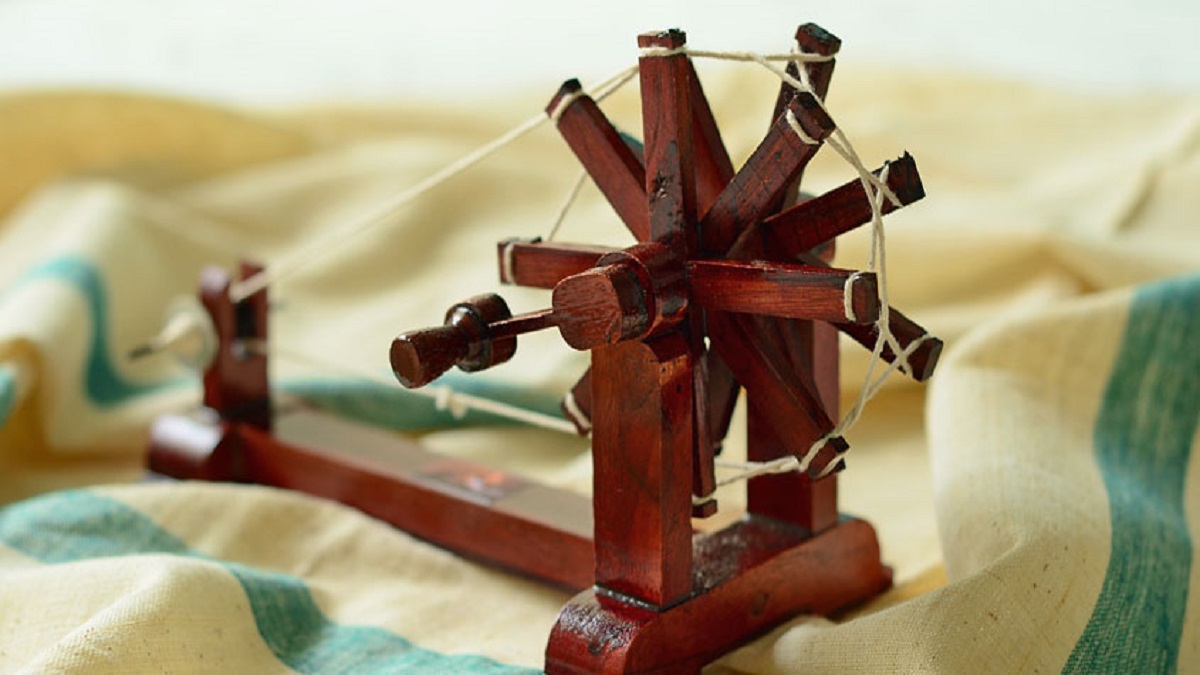
In the past two centuries, millions have been killed by flu, plague and similar pandemics and you will notice they all coincided with the post-industrialisation era that also led to massive urbanisation. Textile industry and textile market are prime examples of industrialisation and urbanisation. And during an event of pandemic, it is the huge assembly lines that are the first ones to be locked down, throwing millions of workers out of job and it is the densely populated urban centres that succumb to the ruthless spread of the virus. This is a prime example of sustainable development gone awry.
It is unfortunate that we need to reiterate the values associated with Khadi, a hand-spun and hand-woven fabric made of natural fibres and keep reemphasising how it is a symbol of sustainability in terms of economy, resilience to pandemics and for health and hygiene. The heritage model of Khadi production is to use small clusters of artisans, set in a rural environment. This in itself is a deterrent to the spread of pandemics, unlike in the urban and industrial context. And Khadi, since it is hand-crafted and not produced in excess like other textiles, it does not collapse under a lockdown-kind of situation. Small clusters of artisans continue to work in the rural settings and their income is not compromised by the deep economic slowdown, which may happen as a consequence of long lockdowns of industry or mega markets.
Khadi production is also distributed nation-wide unlike a few production nuclei of the textile or other industries. As such, the products are locally available, won’t require an enormous network of hazardous movement during pandemics and more than all, affordable to every level of our economic being. Third, the textile industry exposes its workers to an array of chemicals, thereby compromising their health conditions and affecting greatly their immune system to diseases. Covid-kind of viruses do exploit those sections of people that are immunity deficient.
Khadi being chemical free, carbon neutral and completely natural in both its ingredients and the production process, the chemical exposure of individuals and environment is completely absent. Those who wear Khadi also benefit from this chemical-free product and its health and hygiene benefits. Two weeks ago, under the severe impact of Covid-19 that has killed thousands of people in America, ‘Cotton Incorporated’, a US-based research organisation, conducted a survey among Americans about the benefits of wearing cotton and natural fibres at a time like this. Over 84% of the people responded that they are browsing the Internet for textiles and clothing made of natural fibres. Even when questioned about the most comfortable and worry-free attire they wish to wear, over 55% looked for cotton. This survey has helped the US government to re prioritise their support to natural fibres sector within the textile industry, realising that the long-term sustainable development of communities is only possible when we stay close to nature and natural ways of life.
India is endowed with a timeless tradition of making Khadi, which has weathered challenges of time and history to remain stable and strong. Pandemics, economic upheavals, historic events, climate change, political movements, natural disasters are a few prime causation factors that have destroyed many industries and made many vulnerable. Khadi has never altered its course of life. Since, these Khadi production clusters are widely distributed and not arranged as urban centres, it also intrinsically works in line with social distancing at times of pandemic This enormous in-built resilience in Khadi in terms of its composition, process, community and market makes it an exemplary example of sustainable development. The writer is Chairman, Khadi and Village industries Commission















